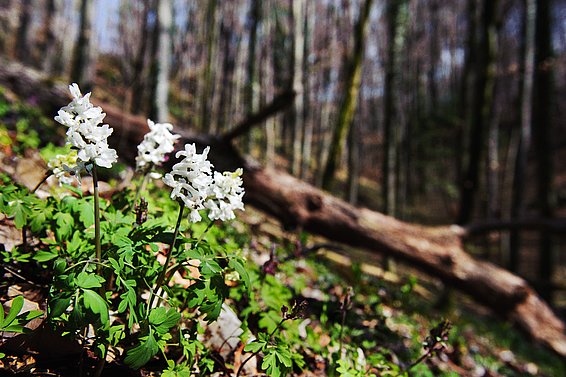11.10.2024 | Universität Gent | WSL News
Many European forest plants are spreading westwards due to high nitrogen inputs - and not northwards, as would be expected in view of climate change. This is shown by a new study with WSL participation.
This text is based on a press release by the University of Ghent (Belgium)
The study, published in the journal Science, provides new insights into how nitrogen pollution affects biodiversity. Until now, ecological research has assumed that rising temperatures will push many species into cooler, more northerly areas. The new study involving the Swiss Federal Institute for Forest, Snow and Landscape Research WSL now reveals that a westward shift is 2.6 times more likely than northward shifts.
The research team led by the University of Ghent identifies high levels of nitrogen deposition due to atmospheric pollution, for example from traffic and fertilizers, as the main driver. These favor the rapid spread of nitrogen-tolerant plant species, mainly from Eastern Europe. The establishment of these highly competitive species in areas with high nitrogen deposition often occurs at the expense of more specialized plant species.
The results highlight that future biodiversity patterns are driven by complex interactions between multiple environmental changes and not exclusively by climate change. Understanding these complex interactions is crucial for land managers and policy makers to protect biodiversity and ecosystem functioning.
Key findings:
- European forest plants shift their distributions at an average velocity of 3.56 kilometer per year.
- 39% of the plant species shift westward. Northward shifts are only observed for 15% of the species.
- Nitrogen pollution rather than climate change is surprisingly the main factor behind westward distribution shifts in European forest plants.
- The study analyzed the shifts in the distribution area of 266 forest plant species across Europe over several decades, with the first measurements being taken in the year 1933 at some locations.
- Several of Europe’s most emblematic forests were included in this study, such as the primeval forest Białowieża in Poland.
--> Original press release from Ghent University
Original publication ¶
Unexpected westward range shifts in European forest plants link to nitrogen deposition. Pieter Sanczuk, Kris Verheyen, Jonathan Lenoir, et al. Science. Published online on 10 October, 20H00 (Paris time). DIO: https://science.org/doi/10.1126/science.ado0878
Contact ¶
Copyright ¶
WSL and SLF provide image and sound material free of charge for use in the context of press contributions in connection with this media release. The transfer of this material to image, sound and/or video databases and the sale of the material by third parties are not permitted.

